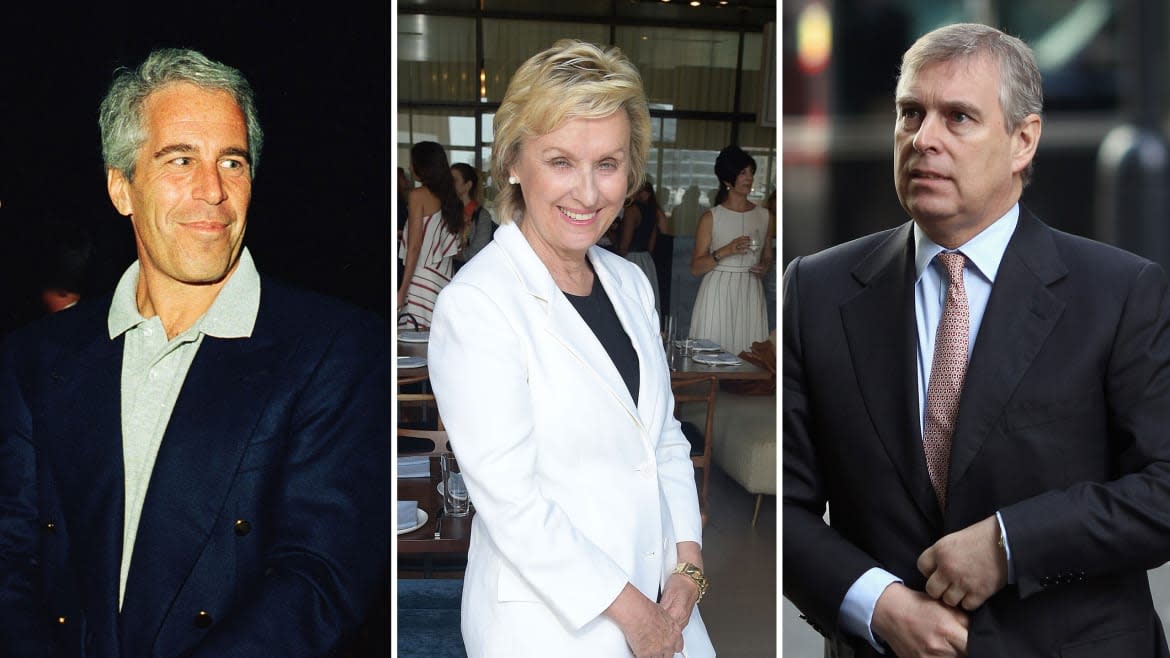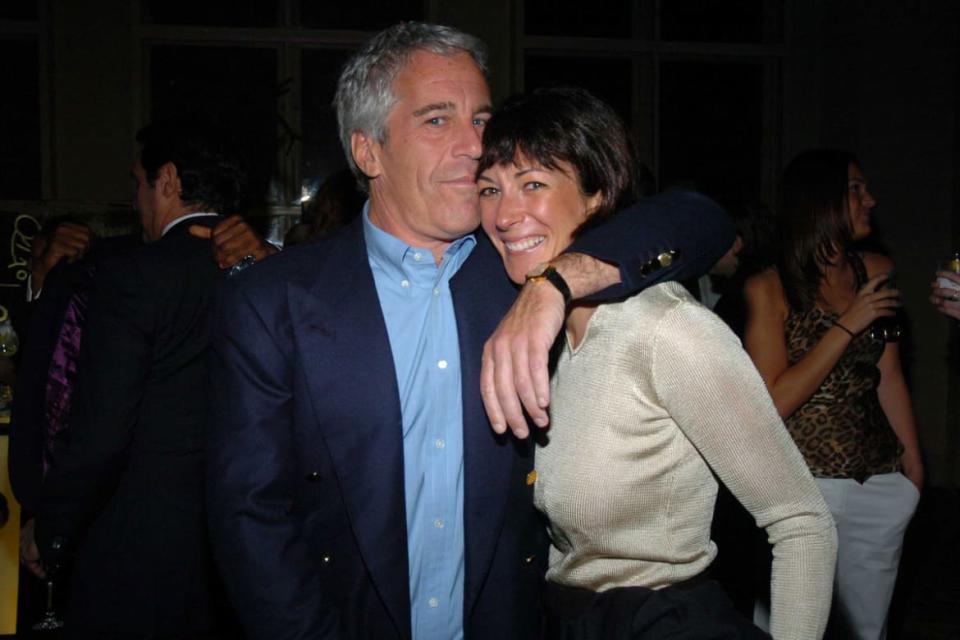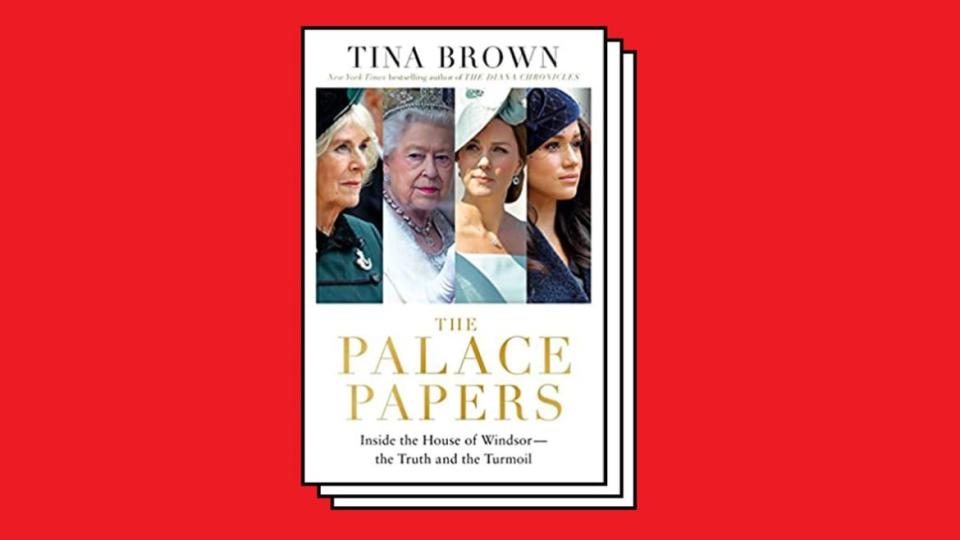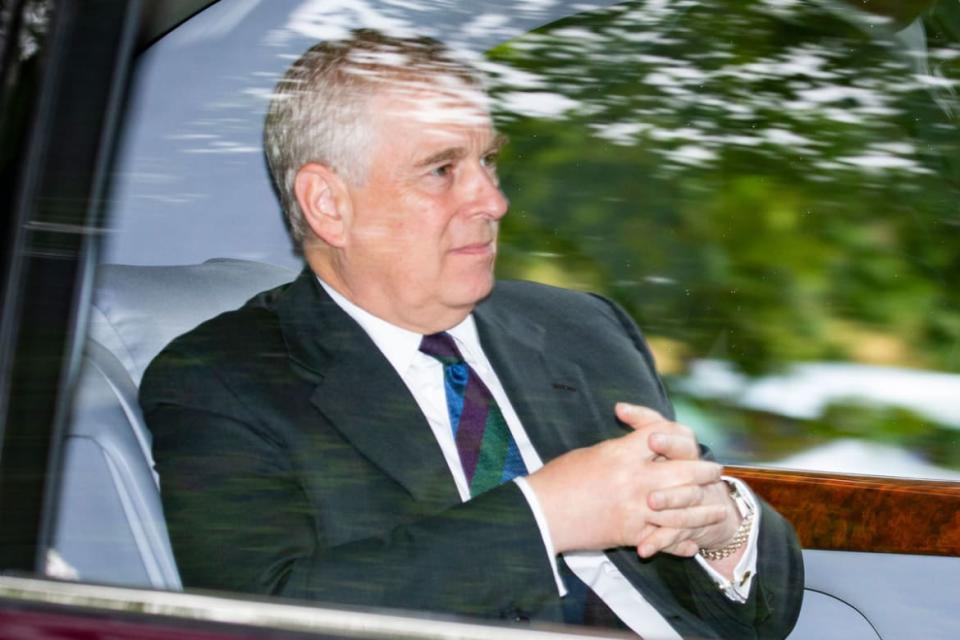Tina Brown Recalls the Day Jeffrey Epstein Threatened Her

One day in July, 2010, Tina Brown, the editor-in-chief and creator of The Daily Beast, arrived at her office—glass-walled and in view of most of the newsroom—to find an uninvited visitor sitting there. It was Jeffrey Epstein.
Epstein knew that The Daily Beast was about to publish the first of what would be six detailed investigative reports exposing his role in sex-trafficking young girls from abroad through his mansion in Palm Beach.
It was an unnerving encounter: “He was snake-eyed and terse,” she writes in her gripping new book, The Palace Papers. “There was a morose, menacing air to him that I found sinister. ‘Just stop,’ he said heavily as I stood staring at him from the doorway. ‘Just stop. There will be consequences if you don’t.’ I thanked him for his suggestion and told him to talk to our lawyers. ‘You heard me,’ he said. ‘Stop.’ And he left.”
She didn’t stop. And what began for her then, and flows relentlessly now through a searing diagnosis of the brittle condition of the House of Windsor, is the story arc of a scandal that engulfed Elizabeth II’s second son, Prince Andrew who—Brown reveals—was referred to by Epstein as his “useful idiot.”
At the time of his visit to The Daily Beast, Epstein was notorious for two things: He had been found guilty in Florida of procuring a child for prostitution and yet he had such political clout that he secured a remarkably lenient plea deal in which he served 13 months in a private wing of the Palm Beach County Stockade, followed by a “house arrest” that covered both his Manhattan mansion and his private Caribbean island.
Epstein never sued The Daily Beast, but he deployed another tactic that, in the era before #MeToo, demonstrated his power, throwing a dinner party for Andrew at the Manhattan mansion and inviting some of the most influential players in the media and arts. That was in December, 2010. By then, Brown had published five of the six exposés. She received a call from Peggy Siegel, a well known publicist, inviting her to the dinner, offering as bait that other guests would be Woody Allen, the highbrow late-night TV host Charlie Rose, and network TV anchors Katie Couric and George Stephanopoulos.
Brown’s response was derisive: “What is this, Peggy, I screeched, the fucking predators’ ball?”—referring specifically to Allen, whose daughter had accused him of sexually molesting her when she was 7, and Rose, whose show was later canceled after allegations of sexual harassment.
Siegel protested that “It’s all been overblown. Jeffrey is really okay. He’s been very generous to me.”
Brown notes her relief at abandoning “my usual editorial willingness to go to anything I think will yield a good story”—passing up an invitation to “a dinner that became one of Manhattan society’s most notorious nights of shame.”
Nobody is better equipped to provide a deep probe into the mind of Epstein’s useful idiot than Brown, who has long tracked the psychic labyrinth of the Windsor brood. She sets it out thus:
“Andrew, unfortunately, exhibited classic symptoms of what is scientifically recognized as the Dunning-Kruger effect, the cognitive bias in which people come to believe that they are smarter and more capable than they really are. The combination of minimal self-awareness and dim intellectual wattage leads sufferers of this condition to overestimate their capabilities. Years of enjoying unearned obeisance to his royal position allowed Andrew to bang on with a combination of overweening self-confidence and unchallenged ignorance. It made him an easy mark for con artists and crooks.”
Indeed, as Brown heard from a source, Epstein flew Andrew on his corporate jet to places where he wanted to do deals, knowing that their governments were obliged to receive Andrew and, using him as his front man negotiated deals with often shady players, and he would “give Andrew some cream off the cake.” (At the same time, Andrew was quite frequently doing his own deals, using British government jets.)

Jeffrey Epstein and Ghislaine Maxwell in 2005 in New York City.
The other link in the sex trafficking chain, Ghislaine Maxwell, is more elusive—“I never really ‘got’ Ghislaine” writes Brown, “though we had many mutual friends.”
After Maxwell became Epstein’s Madame Claude, recruiting what he called his “nubiles”, introducing Andrew to the ménage was her biggest social coup—he was, in Brown’s words, “a now divorced horndog eternally on the hunt, with a guffawing, boob-ogling pickup style.” Maxwell had, she says, “industrialized Epstein’s hitherto amateurish sexual operation.”
In fact, introducing Andrew to Epstein can now be seen as the ignition of a very long fuse that finally set off the bomb that blew up in August 2021, when Virginia Giuffre filed her civil suit against Andrew alleging that he sexually abused when she was under age. This year, what should have been a glorious, unblemished celebration of Queen Elizabeth II’s Platinum Jubilee has instead become tarnished by the iniquity of the queen’s second son—and by the puzzle of her attachment to him, demonstrated when he escorted her to her seat in Westminster Abbey for the service celebrating the life of Prince Philip. But while we palace watchers were all trying to figure that out, we missed something—Philip’s view of Andrew. Brown quotes him saying that Andrew was a “natural boss.” He also, in 1993, complained that Charles was “not king material.” If anything, that assessment is more ominous for the future of the monarchy than mummy’s reluctance to send Andrew to Elba.
Beyond the headline-making bomblets, the real power of this book is the cumulative picture it builds of lives as they have to be lived by the rules and customs of the Windsor palaces. To do this, Brown tracked down many people who had served at various levels in the court. This effort took her, she reports, to “fading walk-up flats in far-flung London postal codes” where there was “a waft of downward mobility and pointless, genteel sacrifice.” As a result, these anonymous voices collectively provide a valedictory tour through a household that is no longer relevant or sustainable, like seeing the ghost of a great ocean liner of the past steaming toward an unheeded iceberg with everyone aboard oblivious.
For one thing, the palace remains a stubbornly white male dominated machine. And, incredibly, it had to wait for the arrival of Meghan Markle to wake up the family to the incongruity of this arrangement when the nation beyond the palace gates had long been buoyantly multiracial. “We didn’t take race seriously enough” a palace source lamely confessed to Brown. “There were hardly any Black people that worked in the household or almost none in senior positions.” The queen herself did not hire a Black member for her personal staff until 2017. “We made a mistake as a household” the source said, “not a mistake in the family.”
In fact, the family exhibits the racial insensitivity of much of the British ruling class. It’s not so much blatant racism, although that certainly exists, as a kind of immanent racism, something subtly imbibed from inbred surrounding social attitudes. Brown, for example, says of Prince Charles that he is “both blind and deaf to the nuances of modern racial literacy.” She quotes the novelist Aatish Taseer, son of a Pakistani father and an Indian mother: “British racism is more casual than its American coeval but more insidious, because its animating prejudice is class.”

The cover of Tina Brown’s book, The Palace Papers.
It’s hard not to take away from all of this the impression that Meghan, far from being applauded for giving the household a badly needed wake-up call, was instead regarded as an annoying alien force unwilling to fit the regime. Brown writes that Meghan, like many Americans, “felt excluded or rebuffed by British reserve, which among the royal family and the palace, was at the extreme end of the usual upper-class denial of emotion.” But it wasn’t just the authentic toffs who were prejudiced. The Daily Mail, house organ of Little England xenophobia, branded her “Hurricane Megan” who was clueless about English traditions.
As I absorbed the full import of the mutual distrust of Meghan and the enforcers of royal ritual, it struck me that she was the latest in a long line of women who have always made the weather in the long-running Windsor saga (the queen has always flown serenely above the weather)—Wallis Simpson, Princess Margaret, Princess Diana, Camilla. Against them the men seem either mad (Edward VIII, aka the Duke of Windsor), bad (Andrew), or ineffectual (Charles).
Wallis Simpson, unlike Edward’s other lovers, found a way to successfully stimulate his low-energy libido, so much so that he gave up the throne rather than lose her because she was a divorced woman, thus precipitating his brother to the throne, the accident that later led to the 70-year reign of Elizabeth II. Margaret, Elizabeth’s wayward sister, became the first royal global celebrity, the warm-up act for the ultimate royal superstar, Diana. And, of course, Camilla appeared out of the bushes to play the part of Diana’s nemesis.
Camilla is a fully drawn character in this book. She stands out for her remarkable endurance, spanning the three acts of her life drama: partner in adultery with Charles; destroyer of Diana’s marriage; the woman risen to be Charles’ queen who soothes all the heir’s many tribulations. There’s more than a hint of the oedipal in Charles’ needs: Camilla is said to resemble his favorite nanny, Mabel Anderson. Brown says he’s never happier than when he turns Camilla into his grandmother, as when she wears jewels from the Queen Mother’s ample collection.
It began to dawn on me that the domestic origin stories of Camilla and Meghan are so vividly at odds in experience, moral codes and talent that they reveal, more than anything else, how irreconcilable the worlds of the Windsors and the Sussexes are, and will always be.
That begins with what could be called the Cuckolds’ Club. Camilla’s great grandmother was Alice Keppel, who for 12 years was the favorite of King Edward VII’s many mistresses. (Fat Bertie was so fat that sometimes his belly had to be trussed up in order to achieve penetration.) As Brown says, “Most of Bertie’s mistresses had compliant husbands who were happy, as was the Honourable George Keppel, with the status their wives’ royal liaison conferred.” When, in 1971, Camilla became an erotic necessity for the young Prince Charles, her husband, Major Andrew Parker Bowles, a celebrated sexual athlete, complied readily with the custom, and was known as “the man who had laid down his wife for his country.” (Around the same time, the galloping Major began bonking Charles’s sister, Princess Anne, and, according to Brown, they remain close friends, although, in Brown’s phrase, he now resembles “a walking pink gin.”) After Camilla finally married Charles, he found and bought some of Alice Keppel’s finest jewelry for her, as if celebrating the tradition of the special priapic priority allowed to princes.
Camilla had a very thin education, centered mostly on learning upper-class etiquette and how to be a good hostess. She never had a real job, and being mistress to the Prince of Wales didn’t include a royal stipend. In 1995, she bought a large country house on 17 acres close to Charles’s Highgrove estate for £850,000 (around $1.34 million) but she was, by upper-class standards, close to being skint. Brown cites a friend of Camilla who said she cleverly exploited the idea of being “cash poor” as a way of impressing on Charles he had an obligation to keep her in the style to which she was accustomed, and he complied. She grew hardened to demeaning attacks from the tabloids about her weight, signing letters to Charles “your devoted old bag.” Her sense of security really came from always being deeply rooted in the privileges of aristocratic life, and, with that sense of entitlement, she never needed any coaching in stepping up to become a Windsor wife.
Meghan grew up in Woodland Hills, a bucolic Los Angeles suburb, and did well at a private Catholic girls-only high school (although she was not a Catholic), then she earned a bachelor’s degree in theater and international relations at Northwestern University. There was no sign then of the toxic exchanges, fanned by the tabloids, that broke out later between Meghan and her white father, Thomas Markle. Her mother, Doria Ragland, descended from a family who were slaves on a cotton plantation in Georgia until freed after the Civil War. It was Tom’s second marriage and it ended in divorce when Meghan was 6. Meghan’s mixed-race background was not a problem until she began her acting career. Casting directors felt she was not white enough for white parts nor Black enough for Black parts. That finally ended in 2011, when she landed her breakthrough role as the lawyer Rachel Zane in Suits. Her success was hard won. It required the toughness of a driven careerist with a strong sense of her own worth and, as it turned out, those were qualities that were not welcome at the palace, where the work ethic was very different.
Brown quotes a somewhat patronizing palace veteran: “One assumes the transition was probably not easy for Meghan, and for someone from the States, not welcome at all. And a big cultural shock about ‘Well, here I am, I’ve become much more famous than I could ever imagined’… And yet, the way she is served, in her mind, has not risen with that.”
Another source says, more simply: “They just couldn’t deal with Meghan’s level of directness.”
Giving context, Brown comments: “There is undoubtedly still a quota of drippy debs hanging around the Palace employ who clock in at ten and amble home at five.” She quotes a civil servant: “In palace culture, a two-hour visit to a community centre is regarded as a full day and there’s a week to talk about it first.”

Prince Andrew.
The royals live a life of bejeweled incarceration, regimented far more rigorously than most people could endure, set out for them in a daily diary prepared months in advance. What social lives they have left are expected to honor the family’s version of privacy. Brown writes: “The key to being private in the Royal Family is to truly—not performatively—want to be so. That means old friends who are loyal, socializing at houses rather than restaurants, cultivating a circle of trust that will never tip off the press.”
But there’s an inherent contradiction in that formula, common to all who experience celebrity. If your day job is essentially public, the public wants to know who you really are, every detail of your life, you become their property. The tension between public and private lives becomes incessant and, abetted by the media, often insufferable. That pressure was the making of the Diana tragedy, but there is no escaping from it. Many of the serious fault lines in the fabric of the House of Windsor arise from this conflict.
The Sussexes were never going to be happy in such a prescribed cage, which is why they have ceased to be authentic royals. But if the distance between Windsor and California is impermeable for Meghan it is not for Harry. His current efforts to maintain relations between himself, his brother, father and grandmother are characteristically heartfelt but also guileless. He’s still a Spencer, not a Windsor, openly channeling his mother every day. The Cambridges, in contrast, have learned how to be loyally royal on the Windsor terms. William has been effectively de-Spencered. Brown describes his weekend kit as “full-on Windsor country bumpkin.”And, therefore, Kate was inevitably fated to be cast in the role of being the antithesis of Meghan in her willingness to conform. Brown comments, “The inescapable truth is that in the unlikely event that the Cambridge marriage ever becomes troubled, the whole Windsor house of cards could come tumbling down. Kate has become a cherished national icon of flawless motherhood.”
But what is the true cost of the self-sublimation required to be a good Windsor wife? Kate is unusual among the other inmates: She has a breadth of knowledge and a love of the arts that were important to her inner life—an unusual attribute in a family of philistines who have custody of one of the world’s finest art collections. In 2012, one of the luminaries of the Royal Academy of Arts was taking advantage of an early morning VIP viewing of a new David Hockney show when a young woman took a seat alongside him to study a picture. He asked her how she managed to be there so early, and she replied, “I just needed to come on my own and so I asked for a favor. I miss my History of Art so much and I never get to see paintings… It’s what I do to get my fix.”
She held out a hand, “I’m Catherine.” Otherwise known as Kate.
Get the Daily Beast's biggest scoops and scandals delivered right to your inbox. Sign up now.
Stay informed and gain unlimited access to the Daily Beast's unmatched reporting. Subscribe now.

